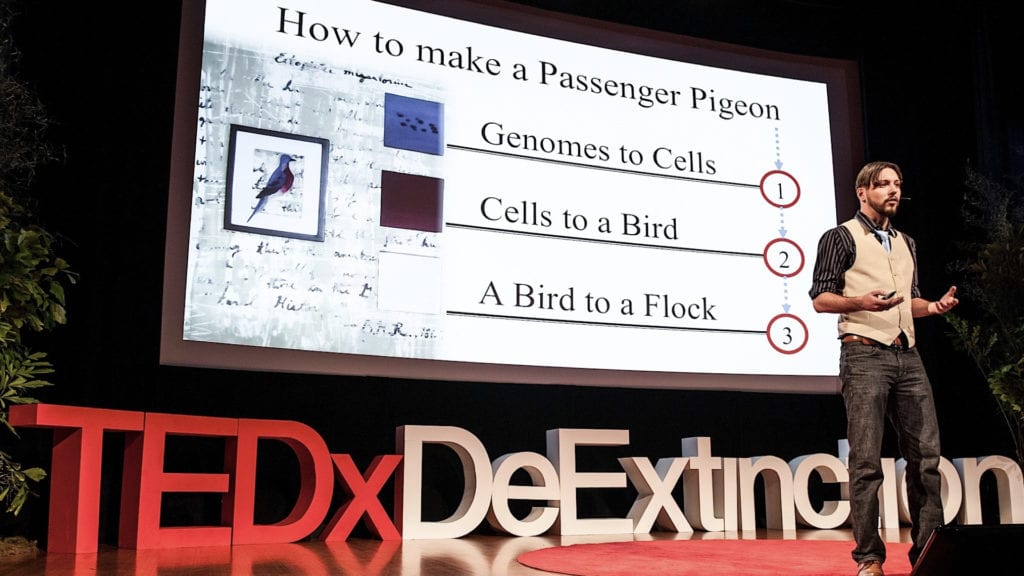
The passenger pigeon (Ectopistes migratorius) was the dominant species in eastern North American forests for tens of thousands of years prior to its extinction in 1914. The birds lived in megaflocks comprising up to several billion individuals, moving nomadically as they consumed fruit and mast, the seed of beech, oak, chestnut, and other forest trees. The size and density of passenger pigeon flocks as well as their migratory patterns and their diet shaped the abundance and the distribution of tree species in these forests. In fact, the passenger pigeon was an ecosystem engineer of eastern North American forests for tens of thousands of years, shaping the patchwork habitat dynamics that these forests relied upon, ecosystems now losing diversity without the passenger pigeon.
Revive & Restore’s Ben Novak worked with a team of scientists from the University of California, Santa Cruz to “better understand what was probably one of the most significant of these interactions—that between passenger pigeons and seed bearing trees.”
Their findings, “Experimental Investigation of the Dietary Ecology of the Extinct Passenger Pigeon, Ectopistes migratorius,” were published in Frontiers in Ecology and Evolution in March 2018. They write:
“Using the band-tailed pigeon (Patagioenas fasciata) and the rock dove (Columba livia) as physical and ecological proxies, we evaluated passenger pigeon dietary range and potential to disperse seeds. Our findings suggest that the passenger pigeon’s dietary range, observed historically to be taxonomically broad, was constrained to certain seed sizes due to bill gape size. In addition, we conclude that the digestive process invariably destroyed consumed seeds but the potential for a nutrition/dispersal mutualism might still have existed via regurgitation and post-mortem release of crop contents.”
From this research, the studies authors determined that “the extinction of passenger pigeons in the early twentieth century undoubtedly influenced associated species and ecosystems as interactions stemming from the pigeons disappeared suddenly.” Understanding these relationships are essential knowledge for reviving the unique ecological role of the Passenger Pigeon.



